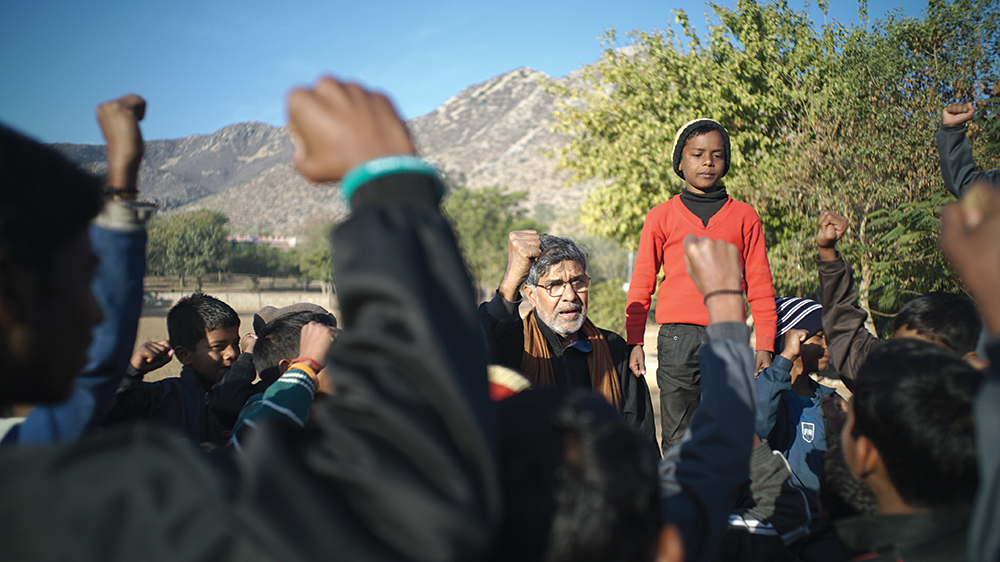Digital Platforms Boost Documentary Financing
By Kathy A. McDonald
LOS ANGELES (Variety.com) – Theatrical documentaries are a risky financial proposition at best. Few have major theatrical runs. However, 2018 saw several exceptional releases garner multimillion-dollar grosses domestically, demonstrating the genre’s cyclical ability to appeal and compete in a crowded field.
Five documentaries are among 2018’s top 100 box office grossers: Focus Features’ “Won’t You Be My Neighbor?” ($22.6 million), Magnolia Pictures’ “RBG” ($14 million), Neon’s “Three Identical Strangers” ($12.3 million), Briarcliff Entertainment’s “Fahrenheit 11/9” ($6.3 million) and the still-in-release “Free Solo” ($3.6 million) from National Geographic Documentary Film.
“In 1986, when I began in the business, I felt like I’d missed the parade,” says Davis Guggenheim (Oscar winner for “An Inconvenient Truth”), producer of the 2018 Sundance documentary Grand Jury prizewinner “The Price of Free,” which chronicles Indian Nobel laureate Kailash Satyarthi’s crusade against child labor and slavery.
The film was co-financed through his Concordia Studio shingle and Participant Media and picked up by YouTube Originals. “I thought all my work would go to PBS. But that’s changed. There are more outlets, buyers and the audience is hungrier for non-fiction.”
Diane Weyermann, Participant Media’s president of documentary film and television, has seen the evolution firsthand as a veteran commissioner and financier of longform docs. “The sea change has been the advent of streaming outlets looking for content for their platforms,” says Weyermann, referring to the addition of players including Hulu, Apple, Amazon, Netflix and YouTube Originals. “That’s the good news. Although there are more opportunities than ever, it’s still difficult and challenging even with greater financing available.”
Foundation funders, development and acquisition execs remain supremely selective when backing projects. Most features are financed from a mix of sources that can include non-profits (Ford Foundation, Sundance Documentary Fund), private equity, cablers (HBO and Showtime), grants (NEA), and international pre-sales or commissions from online outlets (Netflix is now a major backer). A filmmaker’s track record and a superstar subject advance the probability of financing.
“McQueen’s” co-directors Ian Bonhote and Peter Ettedgui pitched their feature documentary concept on the influential fashion designer Alexander McQueen at the Berlinale’s European Film Market. Distributors responded immediately to their approach.
“We wanted to elevate it visually and create our own imagery to give it its own identity,” Bonhote says. The project was pitched as “a theatrical cinematic proposition” and its U.K.-based sales agent Embankment Films raised the initial financing in three days. Bleecker Street handled U.S. distribution.
“It’s very tough to make these things, but Alexander McQueen is a star so it was like having an A-list actor attached to a concept,” Ettedgui says, noting that there was a real demand from indie distribs for the subject.
“International sales made the difference and was the major shift for us,” says Paris-based director-writer Tom Volf, whose debut documentary “Maria by Callas” is released by Sony Pictures Classics. Through a stop-and-start process over four years, with support from France’s TV production company Elephant, Volf eventually raised production financing through pre-sales orchestrated by MK2 Films. The firm sold the feature in 40 countries by close of editing.
“We never called it a documentary, we called it a film,” says Volf, who felt constrained by the 52-minute running time format popular in Europe. Volf credits his producer Emmanuelle Lepers for sharing his creative vision of famed soprano Callas’ complex life story. “The film is halfway between a documentary and a feature and it’s a model of an unconventional way of making a documentary,” he says of the 113-minute finished piece.
As the genre booms in popularity, the caliber and diversity of filmmakers multiplies, pushing creative boundaries. “Filmmakers and producers are more savvy today regarding what will work in the theatrical marketplace, as a series, or what will work in online streaming,” Ettedgui says.
Blockbuster docs — those with known subjects — are easier for theaters to program, Bonhote says. “Independent theaters don’t have the time or the resources to educate an audience, they need people to come with a desire or interest in the talent and subject matter.”
Audiences also have become more sophisticated as the form evolves. “The storytelling in documentaries gets better and better,” Guggenheim says.
The bottom line continues to be the determination of documentary filmmakers to craft and tell a compelling story. Premiering on HBO in June, funded in partnership with the late Paul Allen and his Vulcan Prods., director Erik Nelson’s “The Cold Blue” (now on festival run and screening at the AFI Film Festival) utilizes restored, raw footage from the National Archives, originally shot by William Wyler for his groundbreaking “Memphis Belle.” Nelson jumpstarted the project with his own funds.
“You have to put your own money and talent in,” says the director (who also directed “A Gray State” and produced Werner Herzog’s “Grizzly Man”).
Weyermann agrees. “The documentary world is largely driven by passion and commitment; it’s not driven by money or the business but driven by a person’s commitment to a story and how they doggedly they pursue it, financing or not.”

